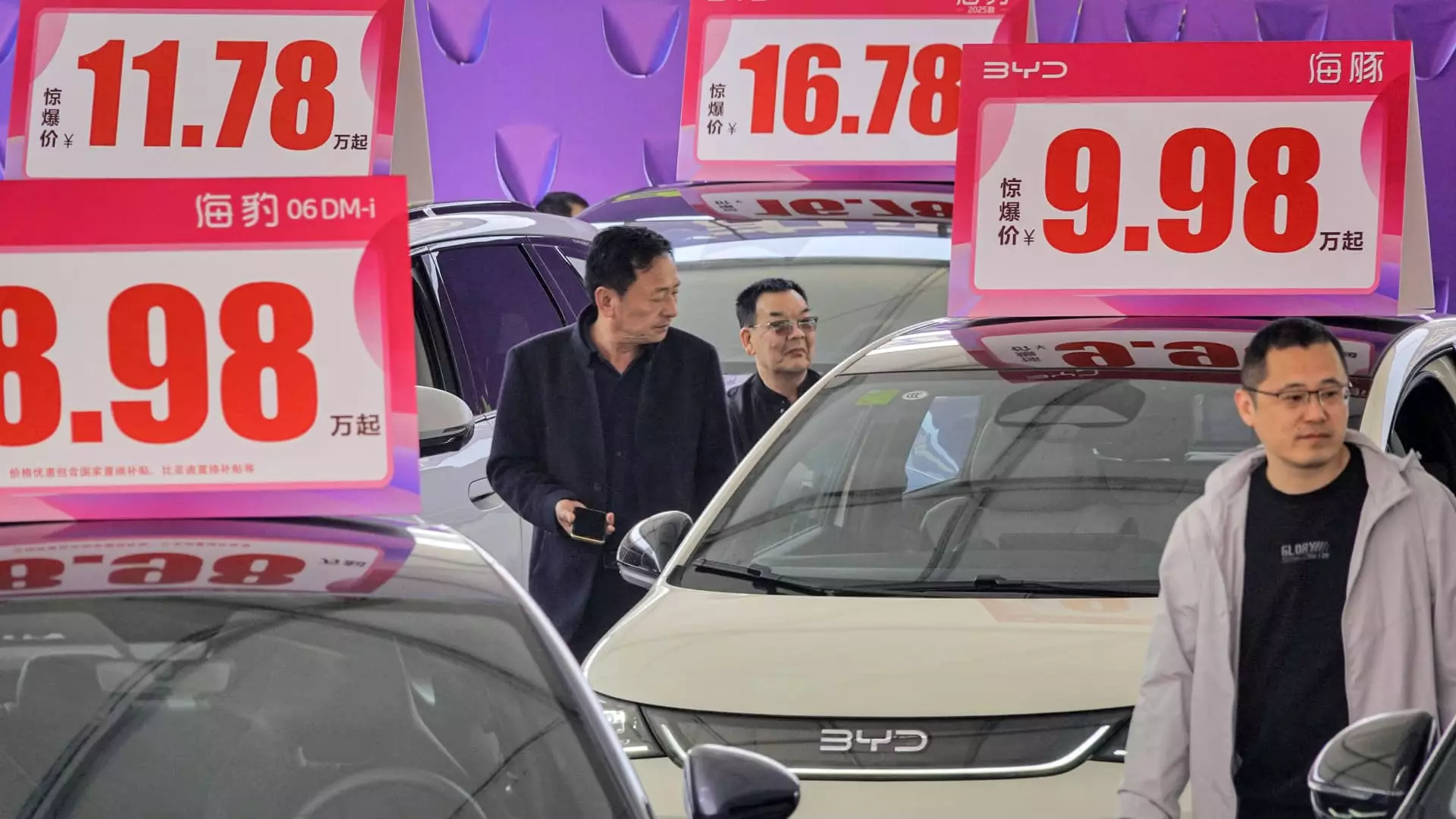The electric vehicle (EV) sector in China is undergoing a seismic shift as competition intensifies, with ramifications reverberating beyond national borders. Recently, industry powerhouse BYD made headlines by slashing prices on its budget-friendly battery-only and hybrid models, offering discounts as steep as 30%. This bold move leaves a profound impact on the domestic auto economy, creating ripples in global markets as well. The company’s compact Seagull, now available at a mere 55,800 yuan (or approximately $7,750), exemplifies BYD’s commitment to ensuring affordability in an increasingly crowded marketplace.
As other manufacturers react—some hastily following BYD’s lead—analysts are voicing concerns regarding the inherent instability this price war might instigate. Zhong Shi, a prominent analyst at the China Automobile Dealers Association, expressed that BYD’s aggressive pricing strategy has left the industry in shock, particularly among smaller automakers. These players, already operating on precarious margins, find themselves facing an existential crisis, underscoring a pivotal moment in the automotive realm where only the most resilient may survive.
The Economic Implications of Price Competitiveness
The emergence of price-driven competition in the EV sector highlights broader economic challenges facing China. With consumer spending stagnating and the economy showing signs of slowing growth, the automotive industry has been one of the few sectors buoyed by government efforts to foster consumption through incentives for new energy vehicles. However, analysts caution that these price cuts may not invigorate demand sufficiently to rebalance the economy.
Morgan Stanley’s Chief China Economist, Robin Xing, articulated that the current price competition symbolizes a persistent supply-demand imbalance that contributes to deflation within the market. Despite discussions on transitioning toward a consumption-led economy, it appears that the entrenched supply-driven model persists. As a result, the path to economic reflation may remain elusive, raising questions about the sustainability of BYD’s strategy and the future landscape of the EV industry.
Challenges Ahead: Consumer Perceptions and Market Saturation
While the decision by BYD and other companies to slash prices may seem strategically sound in a crowded market, it raises essential questions about long-term consumer behaviour and dissatisfaction with quality. The allure of cheaper cars may initially attract customers, but concerns regarding performance, longevity, and brand loyalty cannot be overlooked. The constant price cutting might inadvertently create a perception of the EV market as one characterized by poor quality or instability.
Indeed, the current landscape is reminiscent of other sectors that have experienced similar turmoil, with Great Wall Motors Chairman Wei Jianjun warning of potential an “Evergrande”-like crisis in the auto industry. By comparing the rise of EVs to the once-booming real estate market that subsequently faced challenges, it’s clear that the industry is treading on thin ice, where rapid growth could give way to significant downturns if companies don’t align product quality with price strategies.
External Pressures and Global Market Reactions
As China’s EV manufacturers ramp up their efforts to penetrate international markets, they confront significant geopolitical and economic headwinds, fueled further by tariffs imposed by European and American governments. The European Union has initiated investigations into subsidies granted to domestic automakers, resulting in tariffs that could dampen competitive advantages abroad.
Despite these external pressures, BYD’s recent success in outselling Tesla in Europe marks a significant turning point for the market, indicating that Chinese electric vehicles may have a resilience that defies expectations. However, the question remains whether the longstanding appeal for Western consumers can align with perceptions of quality and innovation that US and European brands tout.
As the electric vehicle battleground continues to evolve, the stakes are high for both established players and newcomers in the industry. The shift toward affordability might come at a cost, one that could redefine consumer standards and market expectations. As automakers strategize for future growth, balancing price competitiveness with the maintenance of quality and innovation will be crucial to sustaining their places in an unfolding global landscape marked by both opportunity and risk.
The race to dominate the EV market is heating up, making it clear that in order to thrive, companies must navigate a complex web of consumer demand, economic fluctuation, and international competition—resulting in an industry that is as precarious as it is promising.

